Shanghai Sound I: Language and Dialects
The first theme of the "Shanghai Sound" project will center on the theme of "Language and Dialects," delving into four key research threads: human geography, language, urban space, and music & traditional opera. Through a local perspective, the project explores the role and significance of sound in urban culture, rediscovering Shanghai’s unique "fusion" cityscape. This initiative aims to present a vivid historical narrative of the city, bringing its cultural landscape to life.
A group of 10 researchers from interdisciplinary fields such as linguistics, architecture, music, and philosophy will explore the dissemination of dialects, neighborhood cultures, apartment soundscapes, and the impact of hybrid cultures. Through performances, lectures, and roundtable discussions, they will invite both scholars and the audience to engage in a dialogue and reconnect with Shanghai.
- Read more about Shanghai Sound I: Language and Dialects
- Log in or register to post comments
West Bund Museum · Cultural Researcher
West Bund Museum · Cultural Researcher Project adheres to the integration of cross-institutional and interdisciplinary approaches while supporting and recommending young cultural scholars. The project re-examines contemporary perspectives on local cultural research, linking local history, indigenous cultural connotations, cultural reflection, and interdisciplinary studies to weave a contemporary collective narrative and invigorate the vitality of urban culture.
At the same time, it provides an experimental platform for young scholars in the broader cultural field, local youth communities, and enthusiasts. With a contemporary vision and an open stance, the program paves a new path for interaction and co-creation at the West Bund Museum, fostering public awareness of collective participation and encouraging engagement with local cultural heritage.
West Bund Museum · Cultural Researcher Project is supported by CHANEL.
- Read more about West Bund Museum · Cultural Researcher
- Log in or register to post comments
<Reanimation 1 (Snow White)>
Oliver Beer
1985, Pembury (United Kingdom)
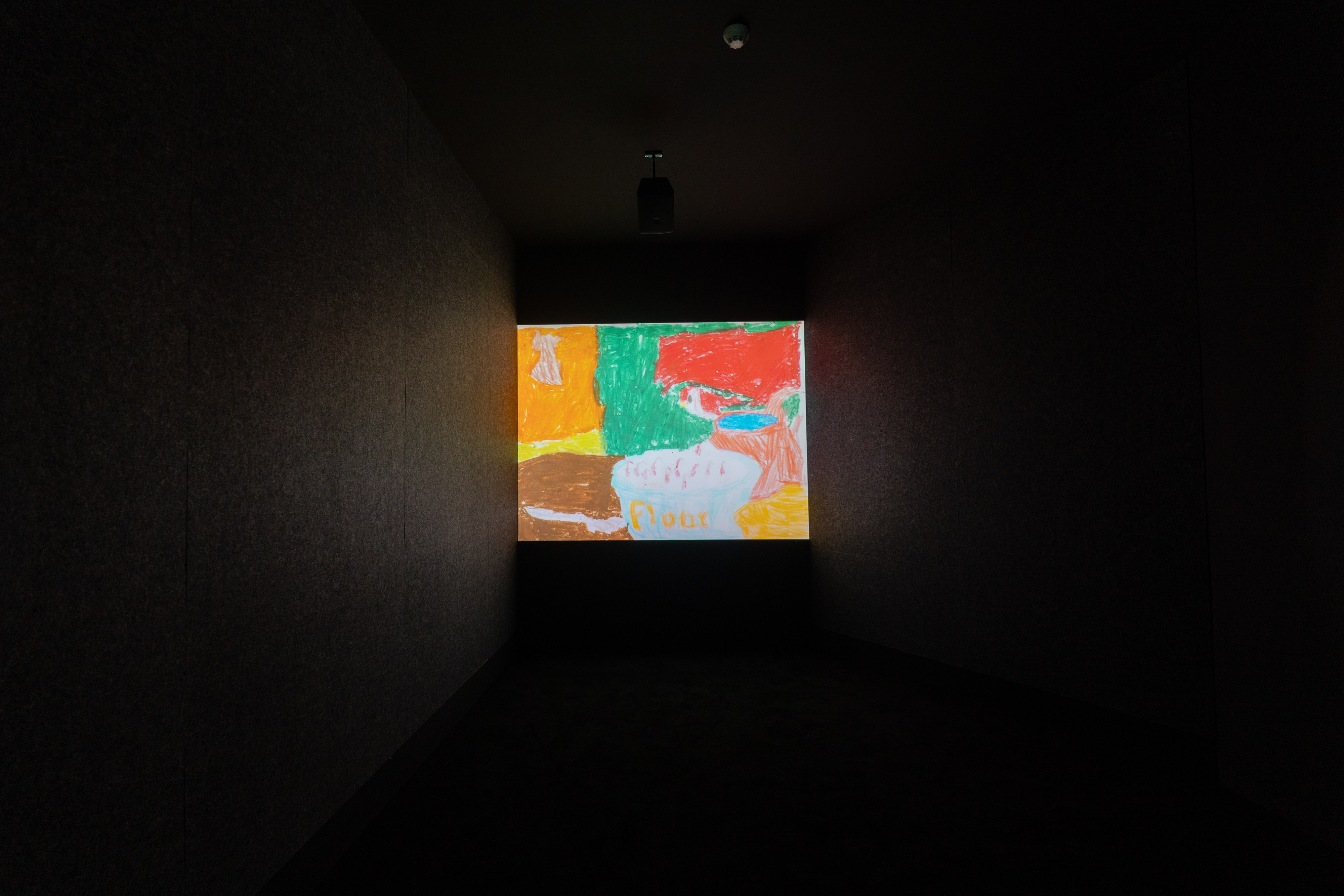
Reanimation 1 (Snow White), 2014
16 mm film and HD video, 500 drawings
2 min. 57 sec.
Gift of the Société des Amis du Musée national d'art moderne
Project for Contemporary Art 2014
AM 2015-F12
Trained as a composer, Oliver Beer has spent the past two decades developing a multifaceted body of work, using a variety of objects, materials and performance devices to compose music, as in his 2007 Resonance Project, in which he uses the resonance of empty buildings to create vocal performances with architecture. Drawn scores, montages of found films and installations composed of frequencies captured in the cavities of old objects are all exploratory aspects of his work. Beer’s artistic research investigates sound as a conductive element of affect, traversing the memorial traces of what is “already there”.
Realised with the participation of schoolchildren from the south of France, Reanimation 1 (Snow White) is one of a series of films that reinterpret classic American cartoons made famous by their widespread distribution. For this project, the artist extracted the famous passage from Walt Disney's first animated film, Snow White (1937), in which the heroine bakes a pie for the dwarf Grumpy. Wistfully singing “Someday my prince will come”, she is suddenly paralysed with fear at the sight of the wicked Queen, disguised as an old woman, at her window. The artist isolated each frame of this sequence, removing the colours, then sent prints of the unique images to young students in Nice. They made 500 drawings, re-imagining and hand-colouring the scenes, which the artist then reassembled into new sequences. The result is a joyous disorder that defies naturalism and fully reveals the children’s creativity and freedom of expression. For the soundtrack, Beer also reworked the original song, translating it into over ten languages. If the hypnotic dramaturgy of the Disney Studios is characterised by the illusionistic synchronicity of image and sound, the breakdown of this symbiotic continuity reflects the multiple sensibilities of the audience and reveals the unsettling strangeness that pervades all fairy tales.
- Read more about
- Log in or register to post comments
<I'm here 17.12.2022 5:44>
Holly Herndon
1980, Johnson City (USA), lives and works in Berlin (Germany)
Mathew Dryhurst
1984, Birmingham (United Kingdom), lives and works in Berlin (Germany)
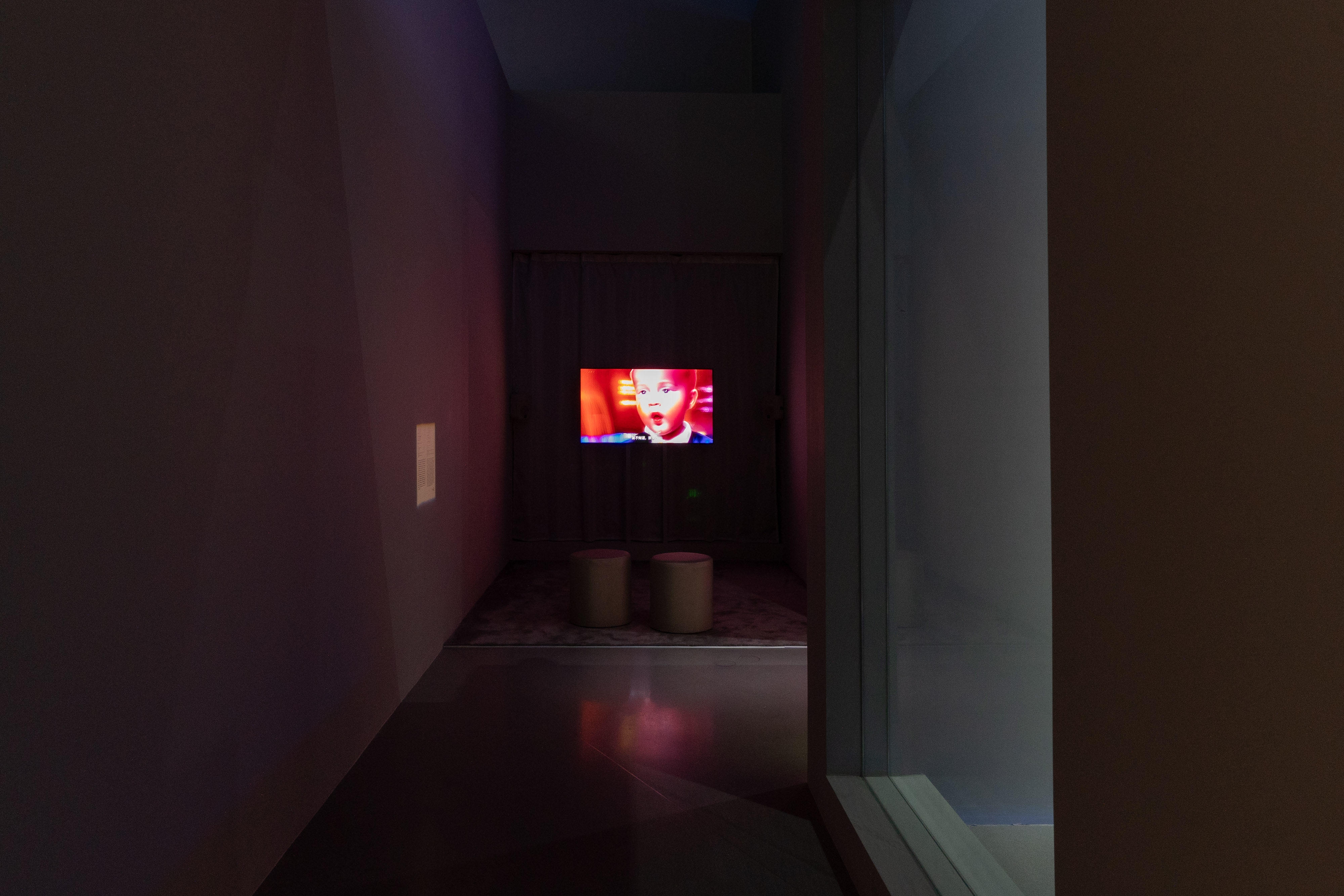
I'm here 17.12.2022 5:44
Digital file (ProRes 422), 16/9, colour, sound, English
5 min. 35 sec.
Acquisition made as part of the collaboration between the Centre Pompidou and KADIST, 2023-2025
AM 2023-804
Holly Herndon, a composer, artist and musician who has gained considerable recognition beyond the art world, has been working with artist and technology researcher Mathew Dryhurst since 2013. Their joint projects investigate the potential of digital tools to facilitate new forms of collaboration, prompting a reassessment of the role of automated surveillance and artificial intelligence in the most intimate aspects of contemporary life. The defence of a decentralised internet that challenges the limits of copyright and the very idea of artistic property has informed much of their recent work. Holly + (2021), for example, devised a protocol for sharing Herndon’s voice – synthesised in the form of a fully functional deepfake twin – which could then be used by other artists to create their own musical compositions.
Herndon and Dryhurst were among the first artists to utilise generative AI tools, particularly text-to-image generators, to conceive visual works. I'm here 17.12.2022 5:44 was composed after a difficult personal ordeal – Herndon’s coma following the birth of their child, Link. The narrative of this intense experience, recorded in the days following her awakening, serves as a voice-over and introduces the prompt-driven generation of a series of images that were later reworked into an animation. Erratic and discontinuous, the visual sequence creates an unexpected, highly contrasting dialogue with Herndon’s emotionally charged narrative, at times anticipating her words and at others bouncing off her voice. The artists also illustrate the many faces of image generation, sometimes blurry, sometimes hyper-realistic, which can produce an infinite number of variations from a single textual source. While AI generators rely on the ever-changing data landscape of the internet, in this work Herndon and Dryhurst use them to develop a complex and deliberately unstable form of writing that reveals the vulnerability of memory, the shifting boundaries of the self and the unsettling visual intensity of artificial creation.
- Read more about
- Log in or register to post comments
<Gluttonous Me>
Liu Chuang
1978, Tianmen (China)
Lives and works in Shanghai (China)
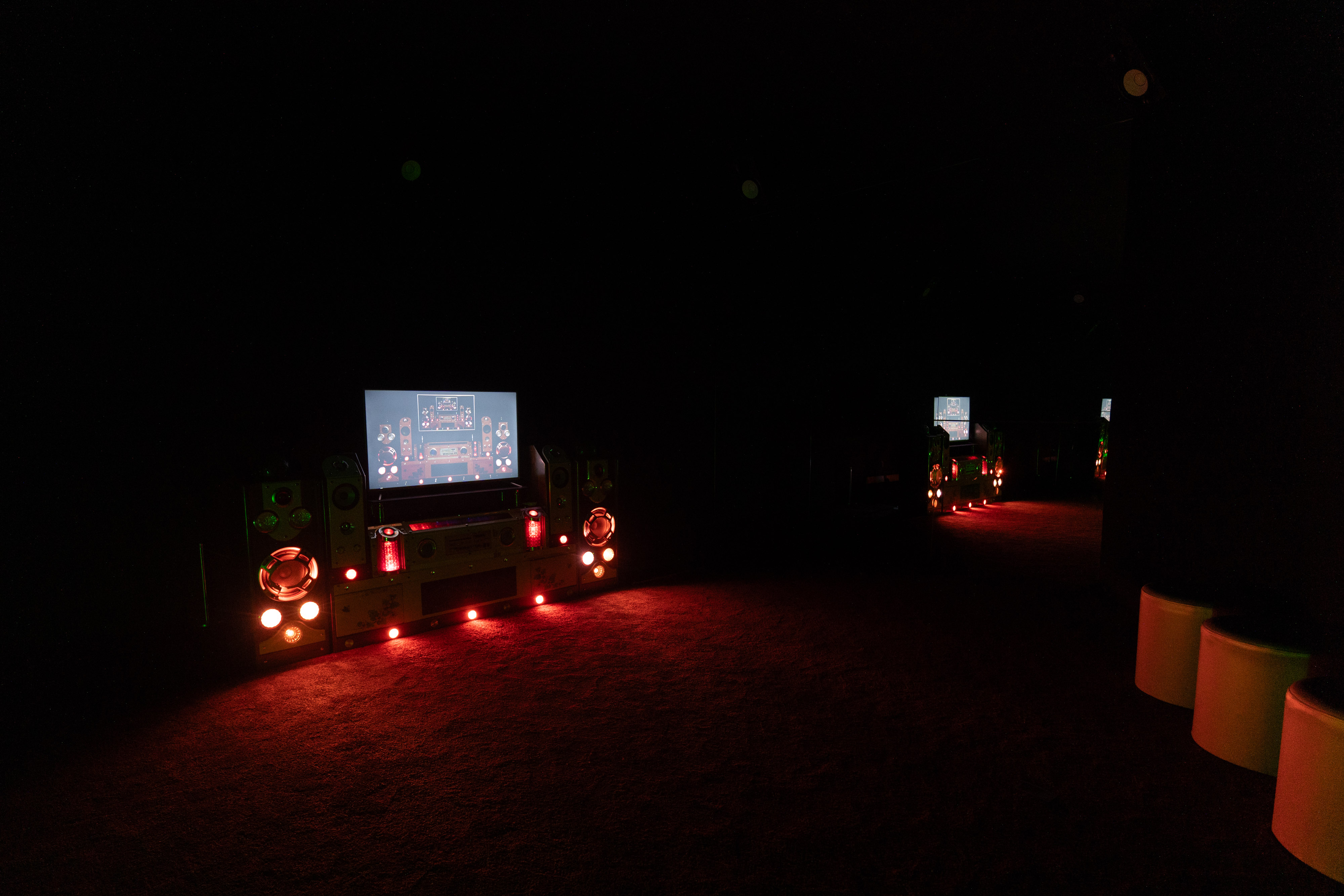
Gluttonous Me, 2018
Audiovisual installation
EVD, home entertainment system (walnut cabinet, Atman television, amplifier, PC computer, 7 JBL loudspeakers, 1 JBL bass speaker, 7.1 surround sound system, plastic lampshades, LED light control system, mirror
Variable dimensions
24 min. 24 sec.
Courtesy of the artist and Antenna Space
Over the past fifteen years, Liu Chuang’s protean body of work has focused on the rapidly changing environment of China. His famous series of found objects, Buying everything on you, begun in 2006, is the result of conversations and transactions the artist initiated with young people looking for work when they arrived in the city of Shenzhen, a former fishing village that in the space of three decades has become a metropolis of over twelve million people. Liu Chuang’s most recent works take as their starting point the transformations of the territory associated with the production of electrical energy and the extraction of rare metals.
Produced in 2018, the audiovisual installation Gluttonous Me was conceived at the same time as the video triptych Bitcoin Mining and Field Recordings of Ethnic Minorities, using the same materials. Composed of digital video and an old-fashioned domestic sound and image broadcasting device, the work immediately reveals a subtle technological dyschrony. His imaginary narrative weaves together science fiction films, ethnomusicological sources and archive footage reminiscent of the dissemination of pop music in large urban areasi. While the equipment testifies to the last days of analogue high fidelity, the image at its centre, almost like an altar, makes extensive use of digital morphing to create an unstable, plastic vision in constant evolution. Real landscapes take on a dreamlike quality, and depictions of aliens in films by Steven Spielberg (Close Encounters of the Third Kind, 1977) or James Cameron (Avatar, 2009) mingle with faces evocative of distant tribes.
Resembling the dashboard of a spaceship, Liu Chuang’s assemblage recalls the late distribution of television and stereo music in the remote mountainous regions of southern China, using obsolete or second-hand equipment. The ethnic minorities he portrays in his work seem to have a relationship with technology that is both magical and utopian. The use of mirrors creates infinite reflections, adding to the magnetic attraction of a floating space-time where folk songs, futuristic fantasies and archives of a possible musical sociology come together.
- Read more about
- Log in or register to post comments
<Full Circle>
Gary Hill
1951, Santa Monica (United States)
Lives and works in Seattle (United States)
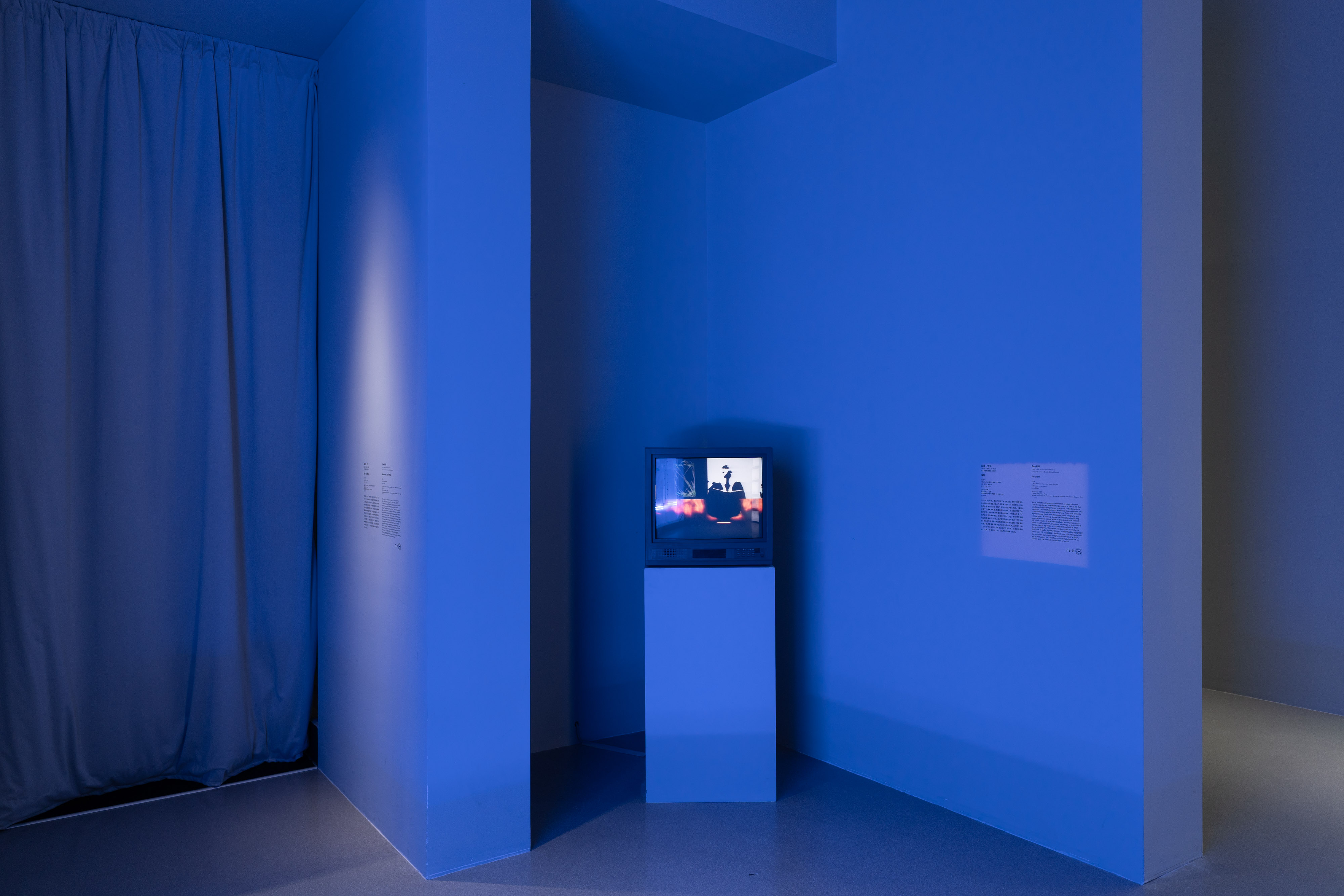
Full Circle, 1978
1-inch NTSC analog video tape, digitized
4:3, color, mono sound
3 min. 25 sec.
Purchase, 1993
Centre Pompidou, Paris
Musée national d’art moderne - Centre de création industrielle (Mnam-CCI)
AM 1994-16
In the 1970s, Gary Hill, one of the second generation of video pioneers in the United States, developed a series of experiments in which he used sound signals to generate images on the cathode ray tube monitor. At the time, the possibility of real-time “translation” offered by electronic technology inspired many artists.
Full Circle is a single-channel video that combines three images on a single screen. The work presents a performance that is simultaneously vocal, sculptural and videographic. A close-up shows the artist’s hands bending a copper-clad metal rod into the approximate shape of a circle, while his voice attempts to stabilise the sound [o]. A sine wave oscillator visually translates the vocal frequencies, providing a test image of the constancy of the sound, which remains regular despite the physical effort required by his action. Originally used to test the distortion of audio signals produced by high fidelity equipment, here it enters a feedback loop that intimately links the body and technology and involves the physical creation of a form, vocal emission, conductive materials (such as copper) and the abstract visualisation of sound. “This work tries to make manifest the perhaps irreconcilable space between the body as physicality and conceptual models built upon the ephemeral, yet also physical, media” , explains the artist.
Trained as a sculptor, Gay Hill first saw video as a way of exploiting the sonority of his material. His work was soon enriched by fundamental research into vocalisation and language. In contrast to linear, cinematic time, he sees video feedback as a process analogous to that of thought, in which “vocalisation was a way to physically mark the time of the body through utterance – the speaking voice acting as a kind of motor generating images.”
In Full Circle, the artist establishes an equivalence between the performative act and the closed circuit of video. He shows the fragile synchronisation between voice and gesture within the electronic information network. The third image captures the action in a wide shot: it has been stylised in the form of a black-and-white negative to achieve a graphic abstraction. In this way, the electronic image, the antithesis of the documentary image, is revealed for what it is: a field of frequencies traversed by tensions.
- Read more about
- Log in or register to post comments
<Muted Orchestra (Muted Situations #22: Muted Tchaikovsky 5th)>
Samson Young
1979, Hong Kong (China)
Lives and works in Hong Kong (China)

Muted Orchestra (Muted Situations #22: Muted Tchaikovsky 5th), 2018
Audiovisual installation
12-channel sound installation, 12 speakers, digital video
45 min.
Performed by the Flora Sinfonie Orchester, conducted by Thomas Jung; sound and video editing by Samson Young and Vvzela Kook; recording produced by Jens Schüneman; recording engineers Manuel Glowczewski, Arnd Coppers; camera operators Verena Maas, Tom May, Roman Szczesny, Jan Hohe; special thanks to Mami Kataoka, Aidan Li, Bettina Heimsoeth, Stephan Moore; commissioned by the Biennale of Sydney with the support of the Hong Kong Visual Art Center (vA!) and Art Promotion Office (APO)
Mori Art Museum Collection
Trained in composition, philosophy and gender studies, Samson Young has developed a protean body of work that encompasses music and sound creation, installation, video and performance. His work is particularly attentive to the tensions, gaps and misunderstandings that exist between the audible and the inaudible. His video series Muted Situations, begun in 2014, comprises twenty-two works to date. It follows a unique protocol: inviting the chosen performers to perform a piece of music or dance by depriving it of the intentional sounds that characterise it.
In this case, each instrument in a passage from Tchaikovsky’s Fifth Symphony has been “prepared” to muffle the sound. As the music disappears, the richly synchronised gestures of the concert are revealed, creating a different sonic landscape in which the clacking of keys, the rustling of scores and the rubbing of bows on strings that have been prevented from vibrating mingle. The work seems to echo a whole conceptual tradition of silence as music, of which John Cage's 4'33'' from 1952 is a manifesto, but while Cage invited us to contemplate the sounds of the world, Samson Young's approach is very different. He exposes the underlying systems that govern the writing and performance of music, allowing us to reflect on the hierarchical principles inherent in all representation. “Mute is not silence,” he explains. “Muting is not the same as doing nothing. Rather, the act of muting is an intensely focused re-imagination and re-construction of the auditory. It involves the conscious suppression of dominant voices; as a way to uncover the unheard and the marginalized, or to make apparent certain assumptions about hearing and sounding.” The spatialisation of sound through twelve floor-level loudspeakers immerses the audience in the intimacy of the orchestra. Samson Young manifests the activity of each musician equally, offering up an unsuspected world of subtle sounds in which the codes and rites of the classical concert are laid bare.
- Read more about
- Log in or register to post comments
<Parade>
Yuko Mohri
1980, Kanagawa (Japan)
Lives and works in Tokyo (Japan)
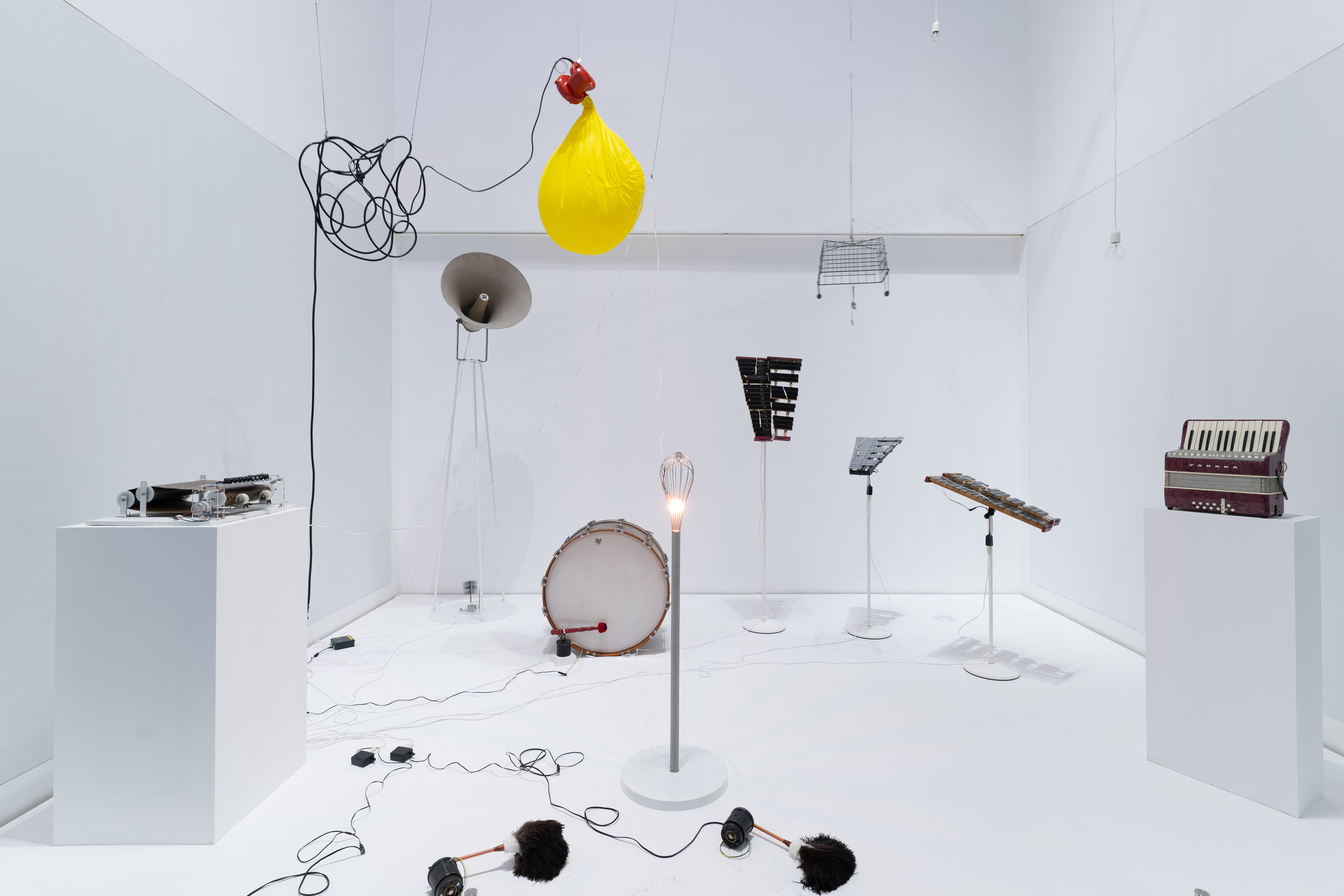
Parade, 2011-2017
Mixed media
Variable dimensions
Gift from the Society of the Japanese Friends of the Centre Pompidou, 2018
Paris, Centre Pompidou, Musée national d'art moderne - Centre de création industrielle (Mnam-CCI)
AM 2018-740
Although Yuko Mohri’s works are at first glance identifiable as installations, assemblages or sculptures, the concept of “event” is fundamental to her artistic vision. Since graduating from the Intermedia Art Department at Tokyo University of the Arts in 2006, the artist has been developing animated reconfigurations of everyday objects that border on choreography and performance. Her work focuses on recasting ordinary objects and ready-made materials to create distinctive ensembles. An heir to the experimental artists of the international Fluxus group in the 1970s, Yuko Mohri creates assemblages that are often unconventional and occasionally dysfunctional, characterised by a delicate balancing act.
Parade presents a dramaturgy of disparate, second-hand objects and musical instruments that come together to form an unexpected orchestra. A leopard print on a synthetic skin serves as a score that is continuously “read” by sensors, just as a music box reads strips of paper punched with holes for each note. Through a motorised mechanism, the installation generates a sequence of movements and amplified sounds. Tones, timbres and textures seem to create a conversation between these objects, which are at times triumphant, plaintive or hirsute, reminding us that the search for harmony in discrepancy is a task that must be constantly renewed. Humour and a sense of the absurd are also part of what the artist calls her “ecosystems”, autonomous entities that recreate the accidents and coincidences of life.
- Read more about
- Log in or register to post comments
<Chicken speaks to duck, pig speaks to dog>
Zhou Tao
1976, Changsha (China)
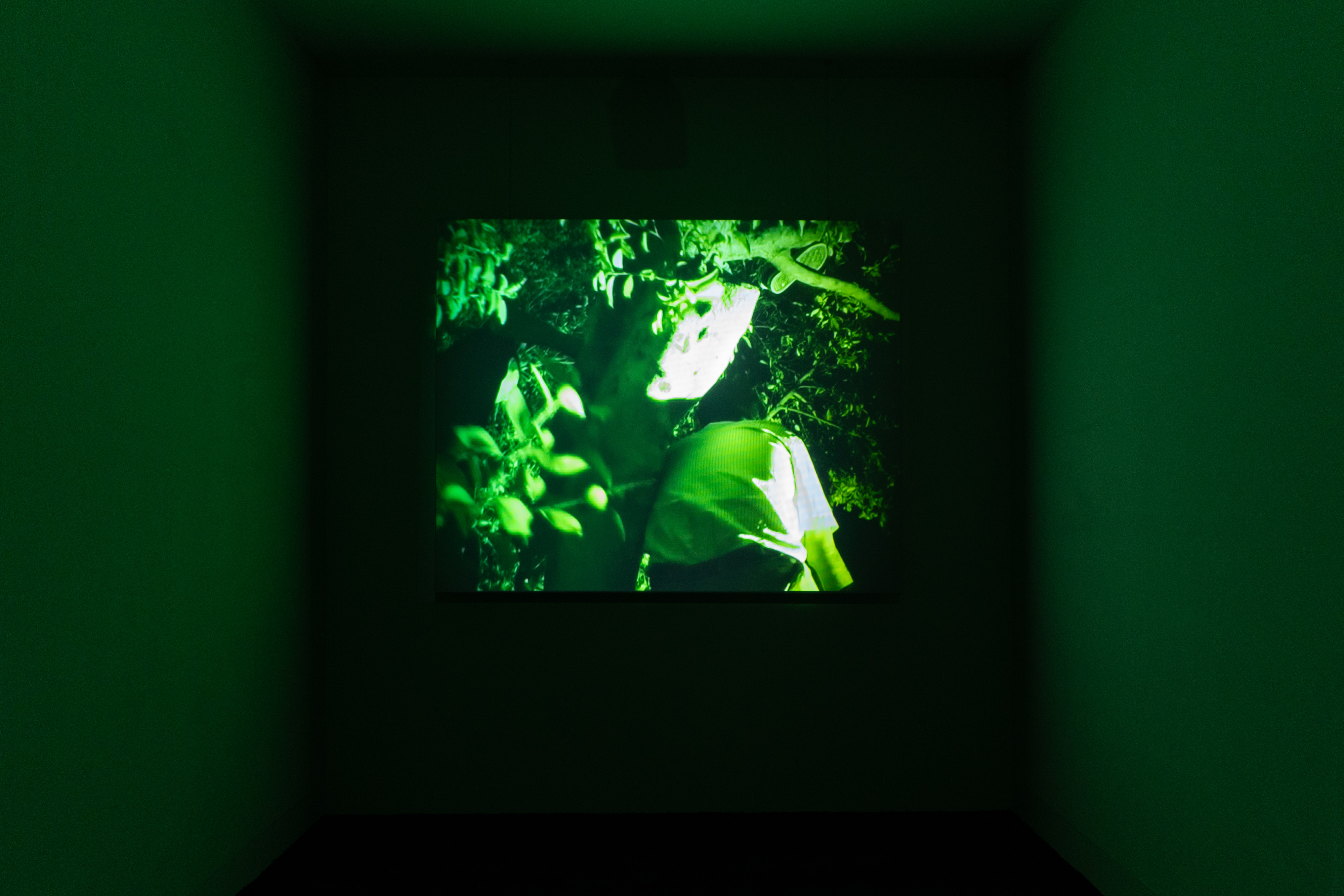
Chicken speaks to duck, pig speaks to dog, 2005
Video, colour, sound
6 min.
Galerie Vitamin Creative Space, Hong Kong / Private collection
Traversing a range of settings from urban to rural and even venturing into the remotest desert regions of the globe, Zhou Tao has used film as a privileged tool to observe the social and environmental changes of his time. Since his first videos in 2003, he has paid particular attention to body language. In his subtly constructed images, the landscape becomes a set, an artificial vision imbued with enigmatic signs. Each place, each site, presents a multiplicity of perspectives, “folds” that encompass the myriad trajectories and meanings inherent in reality.
The ancient Chinese proverb “when the chicken talks to the duck” refers to the inability to understand each other, the difficulty of communication in the absence of a shared language. Zhou Tao makes use of this popular idiom in a video filmed in a park in Guangzhou. The work presents the staging of a group of men perched in trees in the middle of the night, imitating with remarkable precision the cries of various farm animals. Moving freely from one cry to another, the range of sounds creates a breathtaking performance. Using a lightweight camera designed for night vision, the artist infiltrates this unexpected chorus, capturing with stark intensity the impassive faces and guttural thrusts of those who utter this score of animal sounds. By relocating this sonic landscape from the countryside to the heart of a major metropolis, he also evokes the population migration associated with China's economic growth. The subjective, rudimentary camerawork and the combination of precision and improvisation of the naked voices give this moment a dreamlike quality. This vibrant and colourful scene challenges the notion of an ordinary reality that is anonymous, invisible and silent.
- Read more about
- Log in or register to post comments